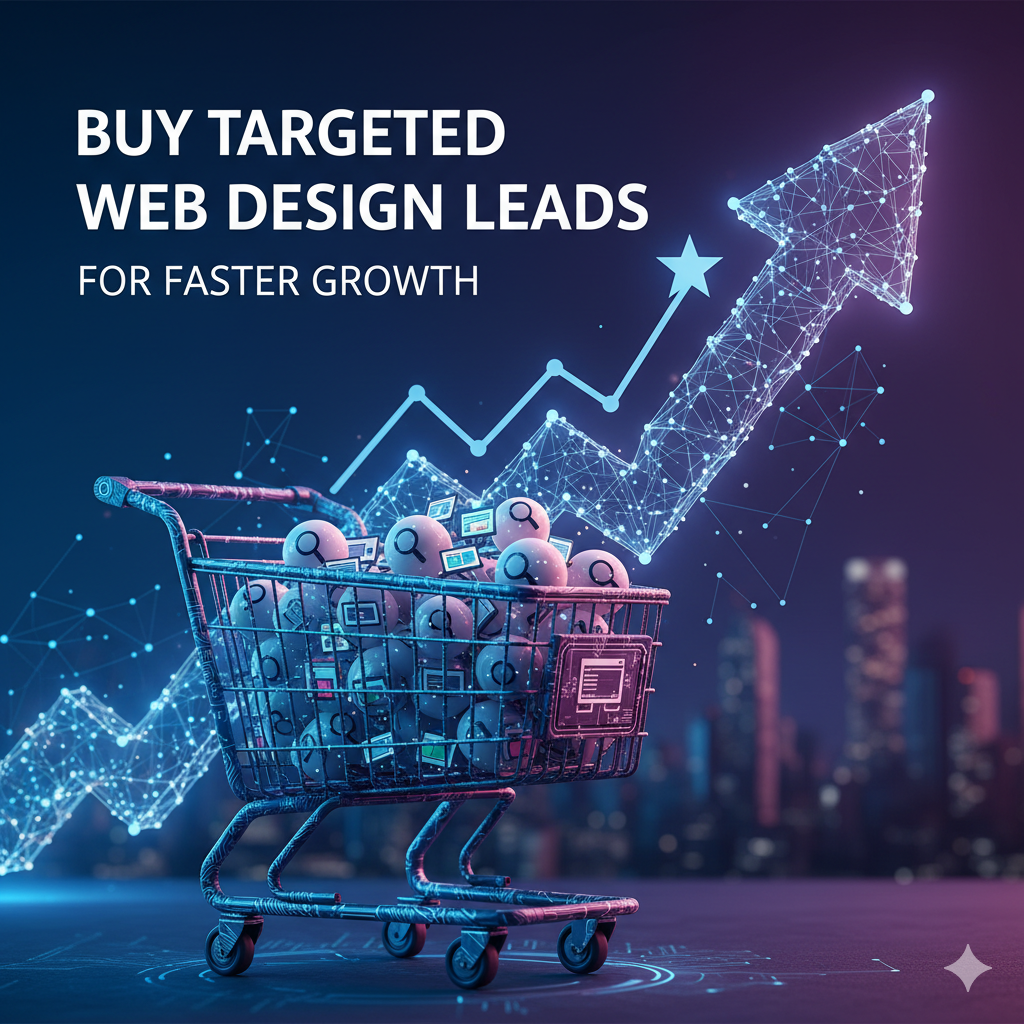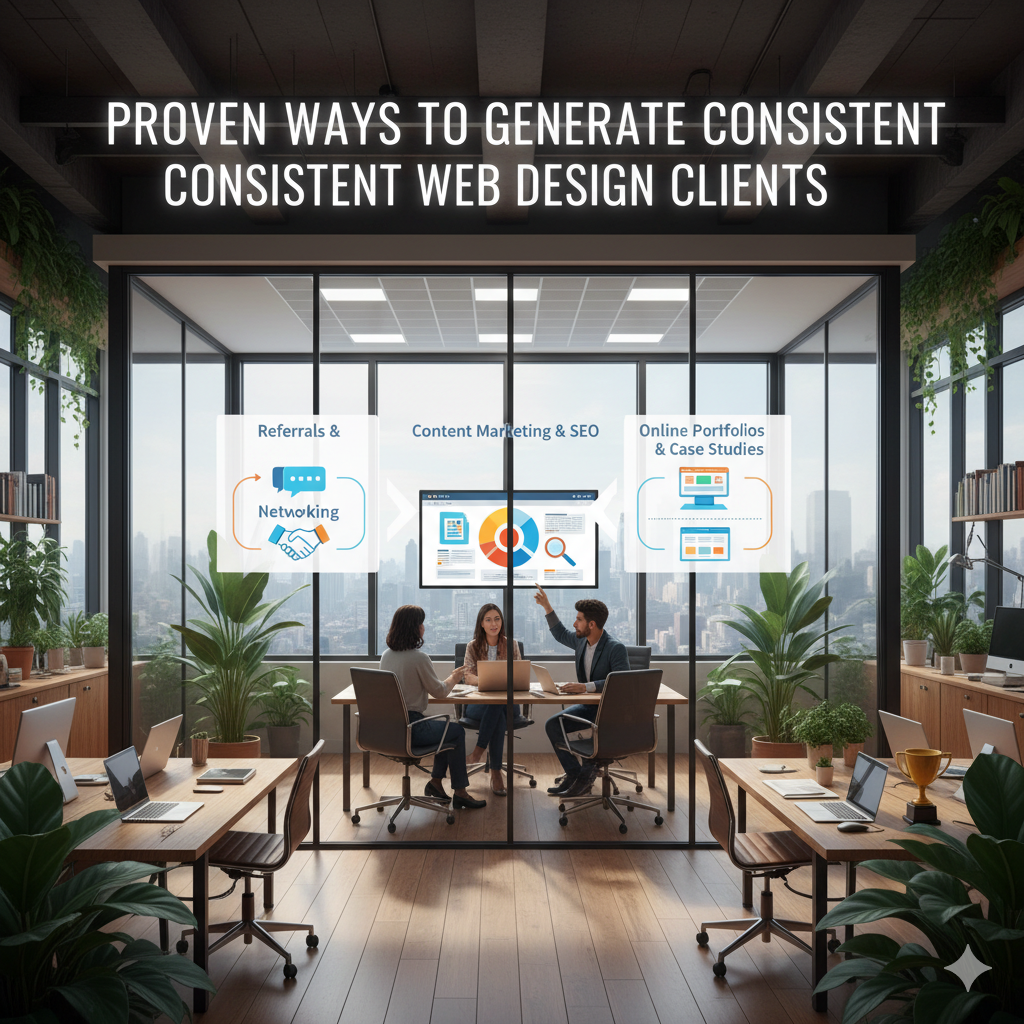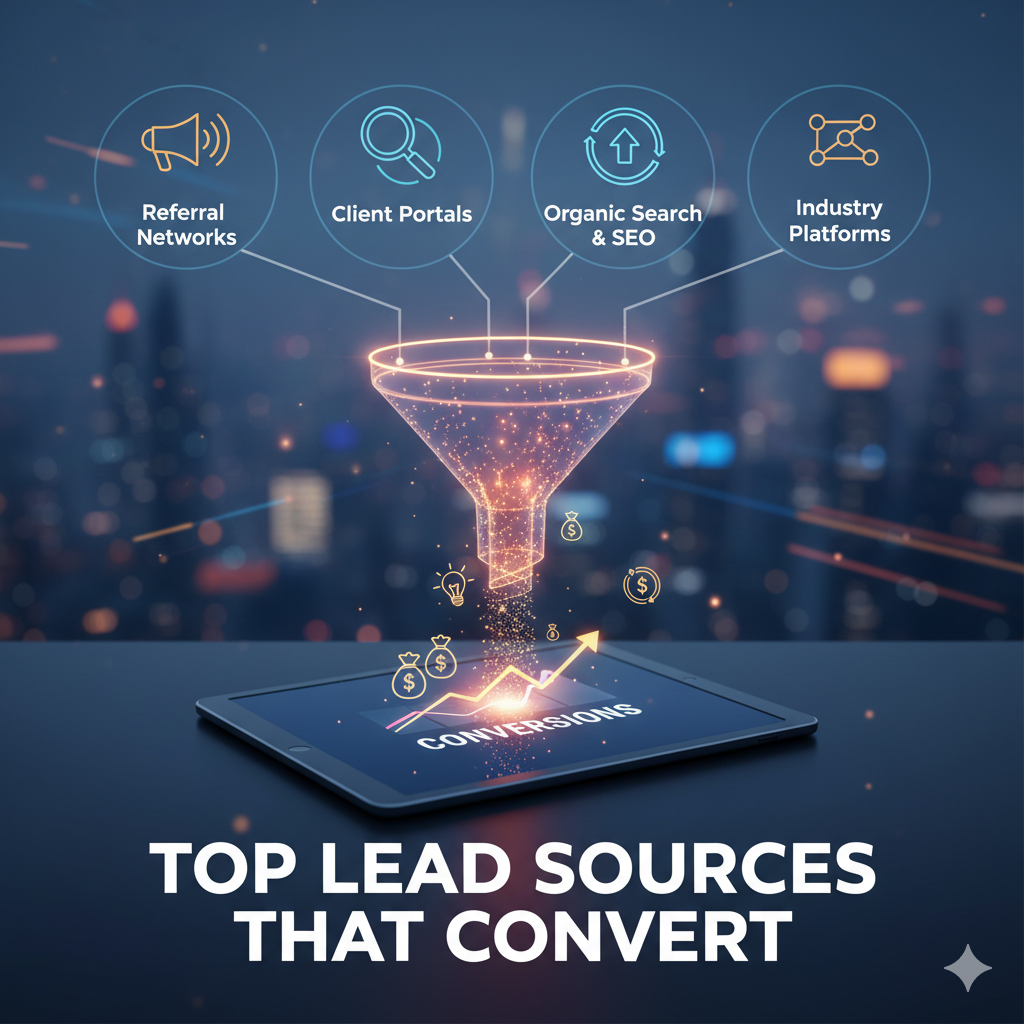For web design agencies and freelancers, one of the biggest challenges is finding high-quality leads that actually convert. Cold calling, referrals, and networking are useful, but they can be time-consuming. Buying web design leads can give your business a significant boost—if you know where to get real, reliable leads. In this article, we’ll explore the top sources to buy web design leads that deliver results and help you grow your agency. 1. Specialized Lead Marketplaces Lead marketplaces are platforms designed to connect businesses with pre-qualified prospects. Sites like UpLead, CIENCE, and LeadsBridge allow you to purchase leads filtered by industry, company size, and location. Why These Work: Using these platforms, you can reach companies actively seeking web design services, making your outreach more efficient. 2. Social Media Advertising Social media platforms like LinkedIn, Facebook, and Instagram offer powerful lead generation tools. By running ads targeting small business owners or specific industries, you can capture leads interested in web design. Offering incentives like free website audits or consultations can qualify leads before you even speak to them. Tips for Success: 3. Purchase From Verified Lead Providers Some companies specialize in selling real, verified leads for web design and digital services. Examples include Belkins, LeadFuze, and GrowthLead. These leads are often pre-qualified, meaning the businesses have shown interest in web design services or digital marketing. How to Maximize ROI: 4. Local Business Directories Local business directories like Yelp, Yellow Pages, and city-specific chambers of commerce can be excellent sources of leads. Many small businesses listed here have outdated websites or none at all—perfect opportunities for web design outreach. Pro Tip: Check websites for design quality and update frequency. Companies with outdated websites are more likely to invest in modern designs. 5. Partnerships and Referrals Building partnerships with marketing agencies, IT consultants, or graphic designers can bring in steady web design leads. While this method doesn’t involve buying leads directly, it’s a low-risk way to get high-converting prospects who trust the referral source. Benefits: 6. Industry-Specific Online Forums Some forums and communities cater to small business owners or entrepreneurs looking to improve their online presence. Websites like Reddit, Quora, and niche Facebook groups can be good places to identify leads organically. Offering helpful advice while subtly promoting your services can turn forum members into paying clients. Final Thoughts Buying web design leads can save time and increase your chances of finding clients—but the key is quality over quantity. Focus on verified sources, filter leads based on your ideal client profile, and follow up promptly with personalized communication. By leveraging marketplaces, social media ads, lead providers, and strategic partnerships, you can consistently fill your pipeline with real web design leads that convert, helping your agency grow efficiently and sustainably. WebsiteSeoLeads
Secrets to Converting Web Design Leads Into Paying Clients
Generating web design leads is only half the battle. The real challenge lies in converting those leads into paying clients who trust your expertise and continue to work with you. Whether you’re running a small agency or freelancing, understanding the secrets to lead conversion can dramatically boost your revenue. 1. Qualify Your Leads Early Not every lead is a perfect fit for your services. Before investing time and resources, make sure the lead matches your ideal client profile. Ask key questions like: By qualifying leads early, you focus your energy on clients who are most likely to convert, saving both time and effort. 2. Personalize Your Approach Generic outreach emails or messages rarely convert. Instead, research your lead’s business, industry, and website before contacting them. Mention specific areas where you can add value—like improving website speed, design aesthetics, or user experience. Tip: Use the lead’s name, reference their website, and highlight exactly how your solution will solve their problem. Personalized communication builds trust and increases the chance of conversion. 3. Offer a Free Website Audit or Consultation One of the most effective ways to convert web design leads is by offering something valuable upfront. A free website audit or consultation shows potential clients that you know your craft and care about their business. Benefits: 4. Showcase Past Work and Testimonials Trust plays a huge role in client conversion. Display your portfolio prominently and share testimonials from satisfied clients. Case studies that show measurable results—like increased traffic, improved conversions, or modernized website designs—can persuade hesitant leads to take action. Pro Tip: Include before-and-after visuals of websites you’ve redesigned. Seeing tangible results builds credibility instantly. 5. Follow Up Strategically Most leads won’t convert after a single email or call. Following up strategically is key. Create a follow-up schedule that includes: Persistence shows professionalism and keeps you on the lead’s radar without being pushy. 6. Provide Clear Packages and Pricing Confusion around pricing can kill a deal. Offer clear, transparent packages with defined deliverables. Whether it’s a starter website, e-commerce solution, or full redesign, clarity helps leads make faster decisions. Bonus Tip: Offer flexible payment options or phased plans to accommodate different budgets. 7. Build Relationships Beyond the Sale Converting a lead into a paying client isn’t just about the first project. Focus on building long-term relationships. Keep them engaged through newsletters, free tips, or follow-ups on website performance. Happy clients often lead to referrals, which are some of the highest-converting leads you can get. Final Thoughts Converting web design leads into paying clients requires a blend of strategy, personalization, and trust-building. Qualify your leads, personalize your communication, showcase your expertise, and follow up consistently. By implementing these secrets, your web design agency can turn prospects into loyal clients, ensuring steady growth and a strong reputation in the market. WebsiteSeoLeads
Buy Targeted Web Design Leads for Faster Growth
Running a web design agency is exciting, but finding clients consistently can be challenging. Spending hours cold-calling or networking isn’t always the most efficient way to grow your business. That’s where buying targeted web design leads comes in. By investing in high-quality leads, you can focus on what you do best—creating amazing websites—while your pipeline fills with potential clients. Why Targeted Leads Matter Not all leads are equal. A random list of businesses won’t help much if they’re not interested in web design services. Targeted leads, on the other hand, are pre-qualified and match your ideal client profile. These leads are: By focusing on targeted leads, you save time, reduce wasted effort, and increase your ROI. Top Sources to Buy Targeted Web Design Leads Here are some of the best sources to get high-quality leads: 1. Lead Generation Marketplaces Platforms like UpLead, CIENCE, and LeadsBridge allow you to filter leads based on industry, company size, location, and more. You can get a list of businesses that are more likely to need web design services, making your outreach more effective. 2. Social Media Advertising Advertising on platforms like LinkedIn, Facebook, or Instagram can help you capture leads directly. You can run campaigns offering free website audits or consultations, which not only attract leads but also qualify them based on interest. 3. Lead Providers Companies such as LeadFuze and Belkins specialize in selling verified leads. These leads are already interested in digital services and can save you months of prospecting. Always verify the quality and accuracy of purchased leads before committing to large volumes. 4. Local Business Directories Directories like Yelp, Yellow Pages, and local chambers of commerce often list businesses that need website upgrades. Look for outdated websites or businesses with no online presence—they’re prime targets for web design services. Tips to Maximize Conversions Buying leads is just the first step. To turn leads into clients: Benefits of Buying Targeted Leads Investing in targeted web design leads helps your business: Final Thoughts Buying targeted web design leads is a smart strategy for agencies looking to grow fast. By choosing the right sources and approaching leads strategically, you can save time, increase conversions, and focus on delivering outstanding web design services. With a steady pipeline of interested prospects, your agency can achieve faster growth and long-term success. WebsiteSeoLeads
Proven Ways to Generate Consistent Web Design Clients
Running a web design business can be incredibly rewarding, but the biggest challenge most agencies face is generating a steady stream of clients. Without consistent leads, growth becomes difficult, and even the best designers can struggle to keep their businesses afloat. Fortunately, there are proven strategies you can implement to attract clients regularly and grow your web design business efficiently. 1. Leverage Social Media Platforms Social media is more than just a place to share your work—it’s a lead-generating powerhouse. Platforms like LinkedIn, Instagram, and Facebook allow you to showcase your portfolio, run targeted ads, and connect with potential clients directly. How to Do It: Social media not only helps you attract new clients but also establishes your authority as a professional web designer. 2. Optimize Your Website for Leads Your own website should act as a client magnet. Many web design businesses overlook the power of their site as a lead generation tool. Key Tips: A well-optimized website builds trust and encourages visitors to reach out for your services. 3. Utilize Referrals and Partnerships Referrals are one of the most reliable sources of consistent clients. Happy clients are often willing to recommend your services to others. Additionally, forming partnerships with agencies, graphic designers, or marketing consultants can lead to a steady stream of referred clients. How to Encourage Referrals: Partnerships and referrals often lead to warm leads, which are easier to convert into paying clients. 4. Invest in Paid Advertising While organic strategies take time, paid advertising can bring clients quickly. Platforms like Google Ads and Facebook Ads allow you to target businesses actively searching for web design services. Pro Tips: Paid ads can generate a consistent flow of inquiries, especially when combined with a strong follow-up strategy. 5. Network in Online Communities Participating in online communities and forums can help you find clients who are actively looking for web designers. Platforms like Reddit, Quora, and niche Facebook groups provide opportunities to showcase your expertise. How to Stand Out: This strategy positions you as an expert and often leads to high-quality client inquiries. 6. Offer Free Workshops or Webinars Hosting free workshops or webinars on topics like “How to Improve Your Website Design” can attract businesses interested in upgrading their websites. Benefits: Free workshops are a subtle but powerful way to turn attendees into paying clients. Final Thoughts Generating consistent web design clients isn’t about relying on one method—it’s about using multiple strategies simultaneously. By leveraging social media, optimizing your website, encouraging referrals, running paid ads, networking online, and offering value-driven workshops, you can build a steady pipeline of leads that keeps your business growing. Consistency, follow-up, and providing real value are the keys. Implement these proven strategies, and you’ll find your web design agency attracting more clients than ever before. WebsiteSeoLeads
How to Find High-Quality Web Design Leads Online
Finding high-quality web design leads online can be challenging—especially in a competitive digital landscape where every agency is fighting for attention. The key isn’t just about generating leads; it’s about finding qualified prospects who are genuinely interested in your services. Let’s explore how to find and attract web design leads that actually convert into paying clients. 1. Optimize Your Website for Lead Generation Your own website should be your first and most powerful lead magnet. Many web design agencies forget to optimize their own site for conversions. Make sure your homepage clearly communicates what you offer, includes testimonials, and has easy-to-use contact or quote request forms. Tips to Improve Conversion: When visitors see proof of your expertise, they’re more likely to reach out for a consultation. 2. Use LinkedIn for Targeted Prospecting LinkedIn is one of the most effective platforms to connect with business owners looking for web design help. You can search for companies by industry, location, or job title (like “Marketing Manager” or “Founder”). Then, personalize your outreach with a value-driven message—avoid copy-paste templates. Example Message: “Hi [Name], I noticed your website could benefit from a few UX improvements. I specialize in creating modern designs that help businesses attract more clients. Would you be open to a quick chat?” A professional yet genuine approach goes a long way toward earning trust. 3. Run Google Ads Targeting Business Owners Paid ads are another powerful way to attract qualified web design leads. By running Google Ads targeting phrases like “hire a web designer,” “website redesign services,” or “web development for small business,” you can capture intent-driven traffic. Pro Tip: Create separate landing pages for each service (e.g., eCommerce design, portfolio websites, etc.) and track which keywords bring the highest conversion rates. 4. Offer Free Website Audits or Consultations Everyone loves free value. Offering a free website audit, consultation, or homepage redesign suggestion is one of the easiest ways to attract potential clients. Not only does it show your expertise, but it also opens the door for further discussion. You can promote this offer on your website, social media, or paid ads. Once leads sign up, you can follow up with actionable insights that naturally lead to your paid service offerings. 5. Buy Web Design Leads from Trusted Sources If you want to scale quickly, buying pre-qualified web design leads can be an efficient shortcut. Websites like WebsiteSEOLeads.com provide ready-to-contact business leads that match your niche and service type. Why This Works: Just remember to follow up strategically with personalized emails instead of generic templates. 6. Leverage Social Media to Build Authority Your presence on platforms like Instagram, Facebook, and Behance can help attract clients naturally. Share snippets of your work, post before-and-after website transformations, and showcase testimonials. Social proof and visual examples build trust faster than any cold message. When people see your consistent work quality, they’ll reach out for quotes and collaborations. 7. Use Email Marketing to Nurture Prospects Not every lead converts immediately—and that’s okay. Use email newsletters or follow-up sequences to stay connected with potential clients. Send them useful tips, case studies, or design trends to keep your brand top of mind. Example Email Topics: Over time, consistent value builds trust—and trust drives conversions. Final Thoughts Finding high-quality web design leads online requires a mix of strategy, creativity, and persistence. Focus on optimizing your own online presence, using platforms like LinkedIn and Google Ads, offering free value, and leveraging trusted lead sources like WebsiteSeoLeads . When you combine proactive outreach with a strong digital footprint, you’ll not only attract leads—but also convert them into loyal, long-term clients for your web design business.
Top Sources to Buy Web Design Leads That Convert
If you run a web design agency, finding consistent, high-quality leads can be a game-changer. While cold calling and networking can work, buying web design leads can save time and help you focus on delivering excellent services. But not all leads are created equal—some convert better than others. Let’s explore the top sources to buy web design leads that actually convert. 1. Lead Generation Marketplaces One of the easiest ways to get web design leads is through specialized lead marketplaces. Platforms like UpLead, LeadsBridge, or CIENCE provide targeted leads based on industry, location, and company size. You can filter leads to match your ideal client profile, making it easier to reach businesses that are actively looking for web design services. Why It Works: 2. Local Business Directories Local directories like Yelp, Yellow Pages, and Chamber of Commerce listings can be goldmines for finding businesses needing web design services. Many small businesses listed in these directories have outdated websites or no website at all—perfect opportunities for outreach. Pro Tip: Check websites for last update dates or design quality. Companies with old designs are more likely to invest in a modern upgrade. 3. Social Media Advertising Leads Platforms like LinkedIn Ads, Facebook Lead Ads, and Instagram allow you to capture leads directly from your target audience. You can run campaigns offering free website audits or consultations, which not only attracts leads but also qualifies them by showing genuine interest. Why It Converts: 4. Purchase From Lead Providers Several companies specialize in selling leads directly. GrowthLead, Belkins, and LeadFuze offer packages for web design leads. While this may cost more upfront, it can produce higher conversion rates since the leads are often already interested in digital services. Tips for Success: 5. Networking and Partnerships Sometimes the best leads come from trusted partners. Collaborate with marketing agencies, graphic designers, or IT consultants who might refer clients looking for web design services. While this isn’t a “purchase,” forming partnerships is an indirect source of high-converting leads. Why This Works: Final Thoughts Buying web design leads is a smart strategy if done right. Focus on quality over quantity—it’s better to have a smaller list of qualified leads than a massive list that doesn’t convert. Use marketplaces, social media ads, lead providers, and partnerships to consistently fill your pipeline with potential clients. By targeting the right businesses and approaching them strategically, you can turn purchased leads into loyal clients, growing your web design agency efficiently. WebsiteSeoLeads
Local SEO Client Acquisition Made Easy for Agencies
Acquiring local SEO clients can often feel like a daunting task, especially for agencies looking to scale without spending countless hours on cold outreach. But with the right strategies and tools, getting high-quality local SEO clients can become a streamlined and predictable process. Understanding Local SEO Clients Local SEO clients are typically small to medium-sized businesses (SMBs) that rely on local customers to drive sales. These businesses understand the importance of appearing in local search results on Google, Maps, and other platforms, but often lack the expertise to manage SEO campaigns themselves. Some examples of potential clients include: Step 1: Build a Strong Local SEO Presence Before pitching your services, it’s crucial that your agency demonstrates authority in local SEO. This includes: By showing potential clients that you practice what you preach, you instantly increase trust and credibility. Step 2: Identify High-Potential Prospects Not all businesses are equally ready for SEO services. Focus on clients who: You can use tools like Ahrefs, SEMrush, or BrightLocal to identify businesses with growth potential in their local search rankings. Step 3: Leverage Inbound Marketing Inbound marketing helps clients find your agency naturally, reducing the need for cold outreach. Strategies include: This positions your agency as a helpful authority and attracts clients who are actively looking for local SEO help. Step 4: Utilize Targeted Outreach While inbound marketing is important, strategic outreach can accelerate client acquisition. Consider: Always focus on solutions, not sales pitches. Businesses respond better when they see immediate value. Step 5: Offer Packages That Deliver Results Create clear, result-oriented SEO packages for local clients. Examples include: Transparent pricing and well-defined deliverables make it easier for clients to choose your services. Step 6: Build Long-Term Relationships Local SEO is ongoing, so building strong relationships with your clients ensures retention. Maintain regular reporting, updates, and consultations to show measurable results and reinforce your value. Conclusion Acquiring local SEO clients doesn’t have to be complicated. By establishing your agency’s authority, targeting the right businesses, leveraging inbound marketing, and offering clear packages, you can make client acquisition easier and more predictable. Start implementing these strategies today, and watch your local SEO client base grow steadily. WebsiteSeoLeads
Simple Ways to Secure Local SEO Clients Quickly
Finding local SEO clients doesn’t have to be complicated or overwhelming. With the right strategies, you can quickly attract businesses in your area who are looking to improve their online presence. Whether you’re just starting your SEO agency or looking to expand your client base, these simple methods can help you secure local SEO clients faster. 1. Optimize Your Own Local Presence Before you approach potential clients, make sure your own business ranks well locally. A strong local presence builds credibility and acts as proof of your SEO skills. When your own local SEO is strong, businesses are more likely to trust your services. 2. Network in Your Local Community Networking is one of the fastest ways to connect with potential local SEO clients. Attend local business events, workshops, or meetups where small business owners gather. Personal connections often lead to quicker client acquisition than cold outreach. 3. Offer Free SEO Audits Providing a free website or SEO audit is a powerful way to show potential clients exactly how you can help them. A free audit is a low-risk way for businesses to see the benefits of working with you. 4. Leverage Online Directories and Social Media Many local businesses actively search online for SEO services. Make sure your services are easy to find. Being visible where your clients are searching increases your chances of being contacted. 5. Partner with Complementary Businesses Collaborating with businesses that offer related services can generate high-quality leads. Partnerships can provide a consistent stream of local clients without heavy marketing. 6. Create Location-Specific Content Content that targets your local area can attract businesses looking for SEO help in your region. Localized content positions you as an expert in your area, attracting more clients. 7. Follow Up with Leads Quickly Many agencies lose potential clients simply by delaying follow-ups. Respond promptly to inquiries. Prompt follow-ups show reliability and professionalism, increasing conversion rates. Securing local SEO clients doesn’t have to be slow or stressful. By optimizing your own local presence, networking, offering free audits, leveraging online platforms, partnering with complementary businesses, creating location-specific content, and following up quickly, you can grow your client base faster than you think. If you’re ready to find more local SEO clients effortlessly, start implementing these strategies today and watch your agency thrive. WebsiteSeoLeads
Reliable Web Design Leads to Scale Your Business
In today’s competitive digital world, every web design agency needs a consistent flow of qualified leads to survive and grow. Without a steady stream of clients, even the most creative designers struggle to keep their businesses running smoothly. That’s why investing in reliable web design leads is one of the smartest moves you can make to scale your agency. Why Web Design Leads Are Essential Web design is a service that nearly every business needs, but reaching the right prospects can be a challenge. Many agencies waste time on cold calls, low-quality inquiries, or outdated contact lists. Reliable leads ensure you connect directly with businesses actively seeking web design services, saving time and boosting your conversion rates. Benefits of Reliable Web Design Leads How to Scale with Web Design Leads Why Choose Websiteseoleads.com? At Websiteseoleads.com, we specialize in providing agencies with reliable, high-quality web design leads that convert. Our leads are tailored to your target audience, ensuring you connect with businesses that actually need your services. With us, you spend less time searching for clients and more time scaling your business. Final Thoughts Scaling your web design agency doesn’t have to be stressful. By investing in reliable web design leads, you unlock the opportunity to grow consistently, serve more clients, and boost profits. The right leads can transform your business from surviving to thriving. 👉 Ready to get started? Visit WebsiteSeoLeads today and start building a predictable client pipeline for your web design agency.
How to Find Local SEO Clients the Easy Way
If you run an SEO agency or freelance business, one of the biggest challenges is finding consistent clients. Many professionals rely on cold calls and endless outreach, but there are smarter, less stressful ways to attract paying clients—especially when it comes to local SEO services. Let’s explore how you can find local SEO clients the easy way. 1. Optimize Your Own Online Presence Before approaching clients, ensure that your own website and profiles are optimized for local searches. When potential customers search for terms like “SEO company near me” or “local SEO services [city name]”, your business should show up. A polished online presence not only builds credibility but also shows clients you can do the same for them. 2. Leverage Social Media and Online Communities Local businesses often look for help in Facebook groups, LinkedIn communities, or niche forums. By engaging in these spaces and offering valuable insights, you position yourself as a trusted expert. This approach creates natural conversations that can turn into long-term clients without a hard sales pitch. 3. Use Lead Generation Services Instead of spending hours chasing clients, you can invest in proven lead generation solutions like Websiteseoleads. With access to ready-to-convert SEO, PPC, SMM, and web design leads, you save time and focus on closing deals rather than finding them. This shortcut is one of the fastest and easiest ways to build a strong client base. 4. Offer Free Local SEO Audits One of the simplest ways to attract attention is by providing free website audits. When local business owners see areas where they’re missing out—like poor Google Maps visibility, outdated websites, or weak backlinks—they’re more likely to hire you to fix the issues. 5. Build Partnerships with Other Agencies Web design companies, social media managers, and digital marketing agencies often need SEO experts to complement their services. By forming partnerships, you can gain steady referrals and access to clients who are already ready to invest in growth. Final Thoughts Finding local SEO clients doesn’t have to be complicated. By optimizing your own presence, connecting in online communities, offering free audits, and using lead generation services like WebsiteSeoLeads, you can grow your client base without endless cold calls. The key is to focus on building trust and delivering value—clients will naturally follow.










